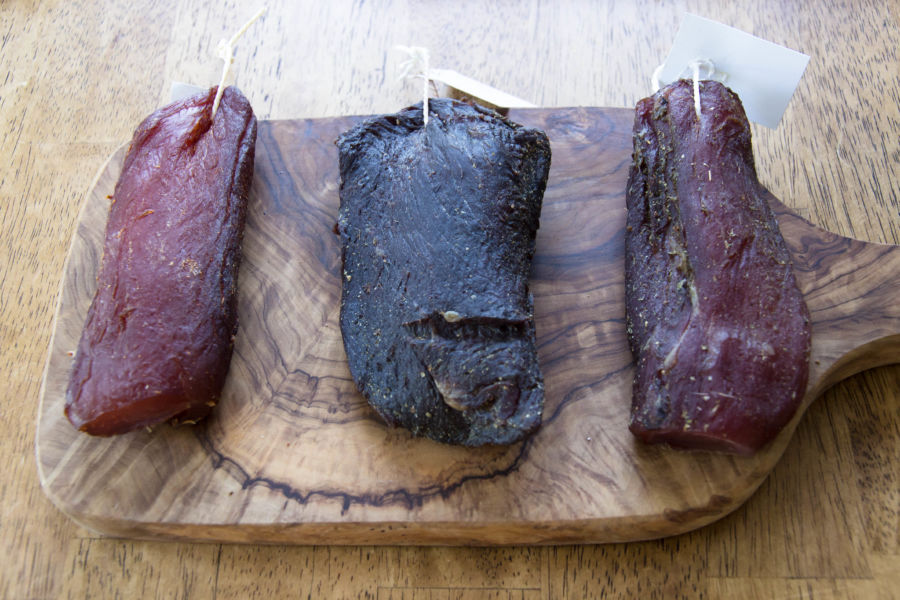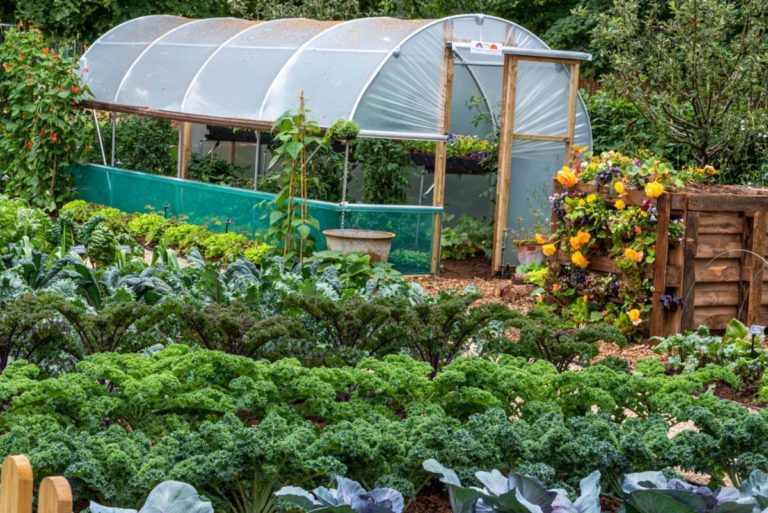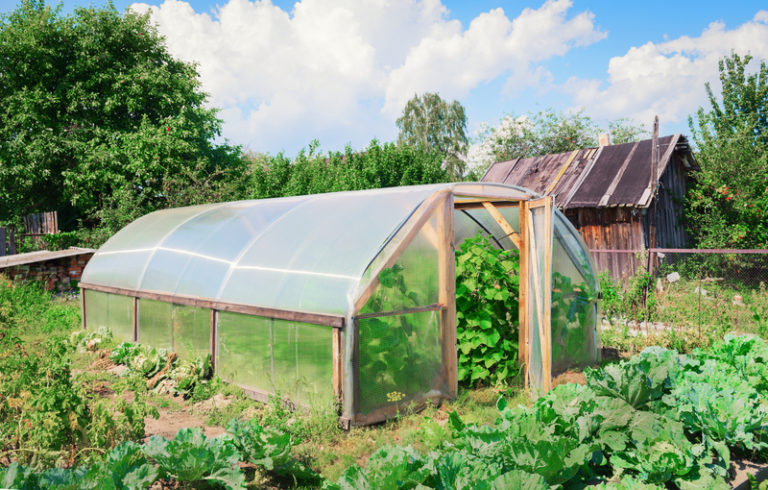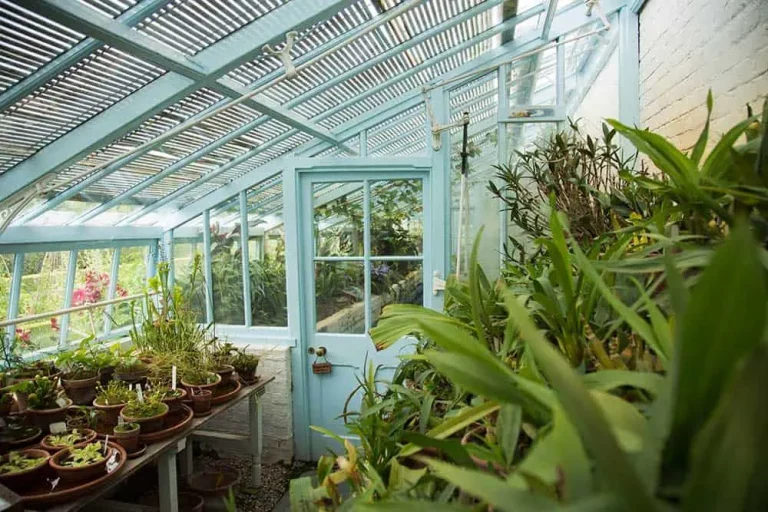Off-grid living often requires self-sufficiency, resourcefulness, and knowledge of traditional skills to thrive.
One essential skill that every off-gridder should master is the art of preserving meat without modern technology.
With the right tools, ingredients, and techniques, you can preserve meat with salt and time, creating a flavorful, shelf-stable product that will keep your family fed throughout the year.
We’ll dive into the science behind drying and curing meats, debunk common myths surrounding these methods, and walk you through step-by-step instructions on how to preserve meat with salt and time in an off-grid manner.
Whether you live in a rural homestead or a small urban apartment, this guide will help you become self-reliant and sustainable when it comes to preserving the bounty of your land or local farmers’ market.
Choose the right cut of meat
Not all cuts of meat are created equal when it comes to preserving. Opt for tougher cuts like beef shanks, pork shoulders, and lamb shanks, as they have more connective tissue and fat to keep them moist and flavorful during the preserving process.
Tougher cuts like beef shanks, pork shoulders, and lamb shanks are ideal for preserving because they contain more connective tissue and fat, which helps to keep the meat moist and flavorful during the process.
These cuts also have a higher fat content, which is important for preserving because it helps to prevent the meat from becoming too dry or brittle.
In addition, tougher cuts are often less expensive than leaner cuts, making them a more cost-effective option for preserving.
To prepare these cuts for preserving, it is important to use a slow cooking method, such as braising or stewing, to break down the connective tissue and make the meat tender and flavorful.
This can be done on the stovetop or in a slow cooker, and the meat should be cooked until it is fall-apart tender and easily shreds with a fork.
Once cooked, the meat can be packed into jars or bags and stored in a cool, dark place, where it will remain fresh and flavorful for months to come.
Overall, choosing the right cut of meat is a critical step in preserving off the grid, and tougher cuts like beef shanks, pork shoulders, and lamb shanks are excellent options for their high fat content and connective tissue, which help to keep the meat moist and flavorful during the preserving process.
With the right preparation and storage, these cuts can provide a delicious and nutritious source of meat for weeks or even months to come.
Cure the meat
Use a mix of kosher salt and brown sugar to create a curing blend. Rub the blend all over the meat, making sure to coat it evenly. Let it sit in the refrigerator for 24-48 hours to allow the curing process to begin.
Curing the meat is an essential step in preserving it off the grid.
To create a curing blend, mix together kosher salt and brown sugar in equal parts.
Rub the blend all over the meat, making sure to coat it evenly.
Place the meat in the refrigerator for 24-48 hours to allow the curing process to begin.
The kosher salt will help to draw out moisture from the meat, while the brown sugar will add a touch of sweetness and help to preserve the meat.
During the curing process, it is important to monitor the meat’s temperature and humidity levels.
The ideal temperature range for curing is between 33°F and 40°F (0.5°C and 4°C), with a relative humidity of around 70-80%.
If the temperature and humidity levels are too high or too low, the curing process may not be successful.
After the curing period is over, remove the meat from the refrigerator and rinse off the curing blend.
Pat the meat dry with paper towels to remove excess moisture.
The meat is now ready to be stored in a cool, dry place or used in your preferred recipe.
Proper curing will help to preserve the meat for a longer period of time, making it an ideal solution for off-grid meat preservation.
Add more salt
After curing, rub the meat with more kosher salt to help preserve it further. This will help to draw out moisture and prevent spoilage.
After curing, rubbing the meat with more kosher salt can help to further preserve it and prevent spoilage.
This additional step is important because it helps to draw out moisture from the meat, which can lead to the growth of harmful bacteria and spoilage.
By rubbing the meat with salt, you are creating an environment that is not conducive to bacterial growth, which can help to extend the shelf life of your meat.
The salt helps to protect the meat from oxidation, which can cause the meat to spoil more quickly.
Off-grid meat preservation methods, such as smoking or drying, can also benefit from the additional layer of salt, as it can help to enhance the flavor and texture of the meat while preserving it for longer.
Add spices
You can also add spices like black pepper, garlic, and herbs like thyme and rosemary to the meat before preserving it. This will help to enhance the flavor of the meat and make it more savory.
Off grid meat preservation is a valuable skill for those looking to live a more self-sufficient lifestyle, and one way to do this is by adding spices to the meat before preserving it.
Not only does this enhance the flavor of the meat, but it also helps to preserve it for a longer period of time.
By adding spices like black pepper, garlic, and herbs like thyme and rosemary to the meat, you can create a more savory and delicious flavor profile that will make your preserved meat a delicacy.
To add spices to the meat, simply mix them into the meat before you begin the preservation process.
For example, you can mix the spices into the meat by rubbing them onto the surface of the meat, or by blending them into a marinade that you can soak the meat in.
The key is to make sure that the spices are evenly distributed throughout the meat, so that the flavor is consistent throughout.
When selecting spices to use in your off grid meat preservation, it’s important to choose those that complement the flavor of the meat.
For example, thyme and rosemary are both excellent choices for preserving beef, while black pepper and garlic are better suited for preserving poultry.
You can also experiment with different combinations of spices to create unique and delicious flavor profiles.
In addition to enhancing the flavor of the meat, adding spices can also help to extend the shelf life of the preserved meat.
Many spices have antimicrobial properties, which can help to prevent the growth of harmful bacteria and spoilage.
This means that by adding spices to your preserved meat, you can enjoy a longer shelf life and a more delicious meal.
Overall, adding spices to your off grid meat preservation is a great way to enhance the flavor and shelf life of your preserved meat.
With a little creativity and experimentation, you can create a wide variety of delicious and healthy meals that will last for months when stored properly.
By taking the time to carefully select and add spices to your meat, you can ensure that your off grid meat preservation is a success.
Create a brine
Create a brine by dissolving kosher salt and brown sugar in water. Soak the meat in the brine for 24-48 hours to help preserve it.
Looking for actionable information on preserving meat without refrigeration?
Look no further!
One of the most effective methods for off-grid meat preservation is creating a brine.
To create a brine, simply dissolve kosher salt and brown sugar in water.
The salt and sugar help to inhibit the growth of harmful bacteria, while the water helps to keep the meat moist and tender.
To preserve the meat, soak it in the brine for 24-48 hours.
This will help to ensure that the meat remains fresh and safe to eat for as long as possible.
The longer you soak the meat, the longer it will last.
It’s important to note that the meat should be kept at room temperature, rather than in the refrigerator, to ensure that it remains in a stable, non-perishable state.
This method is perfect for those looking to stock up on meat for emergency situations or for those who live off-grid and do not have access to a refrigerator.
Soak your meat in a brine today and enjoy fresh, safe-to-eat meat for weeks to come!
Use a dry rub
Instead of a brine, you can also use a dry rub to preserve the meat. Mix together kosher salt, brown sugar, and spices like paprika and cumin, and rub the mixture all over the meat before preserving it.
For those looking to preserve their off-grid meat without the use of refrigeration, a dry rub can be a simple and effective solution.
Rather than relying on a brine solution to preserve the meat, a dry rub made from a mixture of kosher salt, brown sugar, and spices like paprika and cumin can be used to protect the meat from spoilage.
To use the dry rub, simply mix the ingredients together until they form a consistent powder, then rub the mixture all over the meat, making sure to coat it evenly.
The brown sugar and spices will help to inhibit the growth of bacteria and mold, while the kosher salt will help to enhance the flavor of the meat.
Once the meat is coated with the dry rub, you can store it in a cool, dry place or hang it to dry, just like you would with a brined meat.
This method is perfect for those looking to preserve their off-grid meat without the use of specialized equipment or electricity.
Off-grid meat preservation is a great way to ensure that your meat remains safe and fresh, even without the luxury of refrigeration.
By using a dry rub made from kosher salt, brown sugar, and spices, you can protect your meat from spoilage and extend its shelf life.
This method is easy to do and requires only simple ingredients, making it a great option for those living off the grid.
Just be sure to store your meat in a cool, dry place or hang it to dry, and you’ll have a delicious and safe supply of meat for weeks to come.
Keep it cool
Make sure to store the preserved meat in a cool, dry place. This will help to prevent spoilage and keep the meat from going bad.
When it comes to preserving meat, proper storage is important to prevent spoilage and ensure the meat stays safe to eat.
To keep your preserved meat fresh, it’s essential to store it in a cool, dry place.
This means avoiding areas that are prone to moisture, such as basements or humid crawl spaces, and instead opting for a location that is well-ventilated and has a consistent temperature.
A cellar or pantry with a stable temperature between 32°F and 40°F (0°C and 4°C) is ideal.
It’s important to keep the meat away from direct sunlight and heat sources, as these can cause the meat to spoil more quickly.
By storing your preserved meat in a cool, dry place, you can help prevent the growth of harmful bacteria and keep your meat fresh for a longer period of time.
Off-grid meat preservation methods, such as smoking or dehydrating, also benefit from proper storage to maintain the quality of the meat.
Age the meat (optional)
If you have the time and patience, you can age the preserved meat in the refrigerator for a few weeks to allow the flavors to mature and develop. This will help to create a more intense, savory flavor.
Aging the preserved meat can be a game-changer for those looking to take their homemade charcuterie to the next level.
By allowing the flavors to mature and develop over a period of weeks, you’ll be rewarded with a more intense, savory taste that’s worth the wait.
This process is best done in the refrigerator, where the meat can age slowly and evenly.
To age the meat, simply wrap it tightly in cheesecloth or a breathable cloth and place it in a covered container in the fridge.
Monitor the meat regularly to check for any signs of spoilage, and rotate the container every few days to promote even aging.
After a few weeks, the meat will have developed a richer, more complex flavor profile that’s perfect for slicing thin and serving on crackers or bread, or as a topping for pasta dishes and salads.
The aging process will also help to tenderize the meat, making it more enjoyable to eat.
With a little patience and attention, you’ll be rewarded with a delicious, artisanal meat that’s well worth the wait.
Want More? Dive Deeper Here!
Hey there! If you’re the type who loves going down the rabbit hole of information (like we do), you’re in the right spot. We’ve pulled together some cool reads and resources that dive a bit deeper into the stuff we chat about on our site. Whether you’re just killing time or super into the topic, these picks might just be what you’re looking for. Happy reading!
- pivotid.uvu.edu – Preserving Everything Can Culture Pickle Freeze Ferment Dehydrate Salt Smoke And Store Fruits Vegetables Meat Milk And More Countryman Know How
- pivotid.uvu.edu – Preserving Everything Can Culture Pickle Freeze Ferment Dehydrate Salt Smoke And Store Fruits Vegetables Meat Milk And More Countryman Know How
- 504 Gateway Time-out
- (PDF) Space Food and Nutrition pdf






